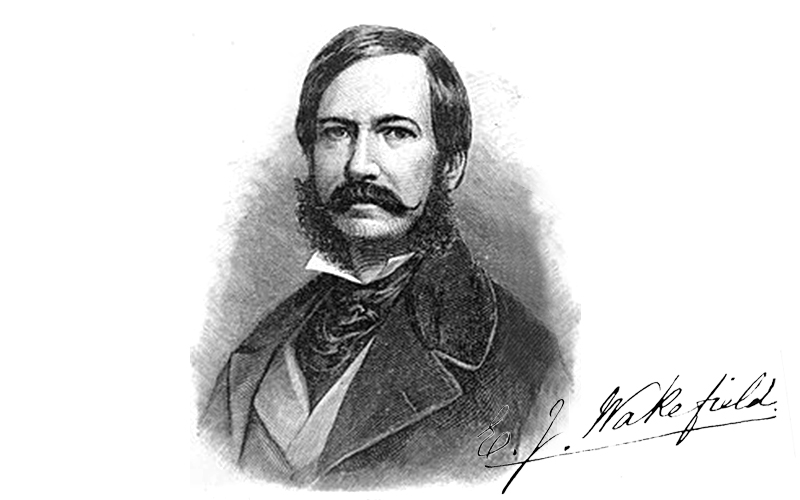Colonial characters in New Zealand
I’ve became obsessed with the Wakefields while writing a novel about a fictional family of early settlers. I spent months inventing complex characters and dramas for my story. But marching into my research and sprawling themselves along every plot-line came the Wakefields and I can’t keep them out: generations of reckless, debauched, manipulative, egotistical, philandering creative geniuses with the complexities of an entire ecosystem. I’ve had to dump my imaginary characters and write about the Wakefields. They’re too good to ignore.
You can’t make this shit up.
A quick dip into Edward Gibbon Wakefield’s past, (he who invented the system of colonisation that formed the original settlements of Wellington, Wanganui, New Plymouth, Nelson and Christchurch) will tell anyone that much of his formula for colonialsation originated from Newgate Prison, where he was incarcerated for the family pastime of abducting and wedding a young girl in the hope her dad would give him a leg up in politics. He didn’t, but it was touch and go.
Edward Gibbon’ son Jerningham sailed around the world in a 382 ton barque to New Zealand in 1839, back and forward across Cook Straight and up and down the West Coast, wrangling with Te Rauparaha and drinking with Te Rangihaeata, negotiating land deals with local chiefs, staying a step ahead of Hobson and the Crown, adventuring up rivers in waka to meet war parties, whaling and trading, all the while writing brilliant and evocative journals he turned into bestselling propaganda for the colony. Pretty swashbuckling stuff for a nineteen-year-old lad.
William Wakefield did a lot of the early colonial leg work diligently and intelligently. He put “Wellington” on the map (owed him a political favour) and kept the missionaries from inheriting the earth, which is a plus point in my books. He was probably quite a decent man when not in thrall to brother Edward Gibbon or reining in wild young Jerningham. He seriously lost his judgement when he accepted wayward bankrupt brother Daniel into New Zealand under a false name (leaving his gambling debts and the wife he had infected with an unpleasant disease) and helped establish him as Crown Solicitor.
What have the Wakefields ever done for us? It’s a complex question. They are mostly forgotten as we focus on the dominant role of the Treaty of Waitangi in 1840, but at the time the Wakefields were potentially far more influential than Hobson. Which is why I was astonished and delighted to open the Dominion Post today to see Wakefield’s face highlighting an opinion piece on the Treaty, with his very noble quote:
“The establishment of the same rights and same obligations can only be fair between parties who have the same power in the same field.”
It’s well said and certainly resonates on Waitangi Day, though imbalance of power obviously wasn’t top of Wakefield’s mind when he abducted 15-year-old heiress Ellen Turner.
The Wakefields were an extraordinary family, men with huge personal ambition and a genuine desire to improve the system for those without power, although their methods were often dubious and ambiguous. They all seemed to verge on insanity – and I haven’t even mentioned Felix or the father. I both applaud them and strongly disapprove of them and never quite know what to think of them on any given day.
Love them or hate them, they make a hell of a story.




 Our immigrants continued to arrive, newly ashore and land-fragile.
Our immigrants continued to arrive, newly ashore and land-fragile.






